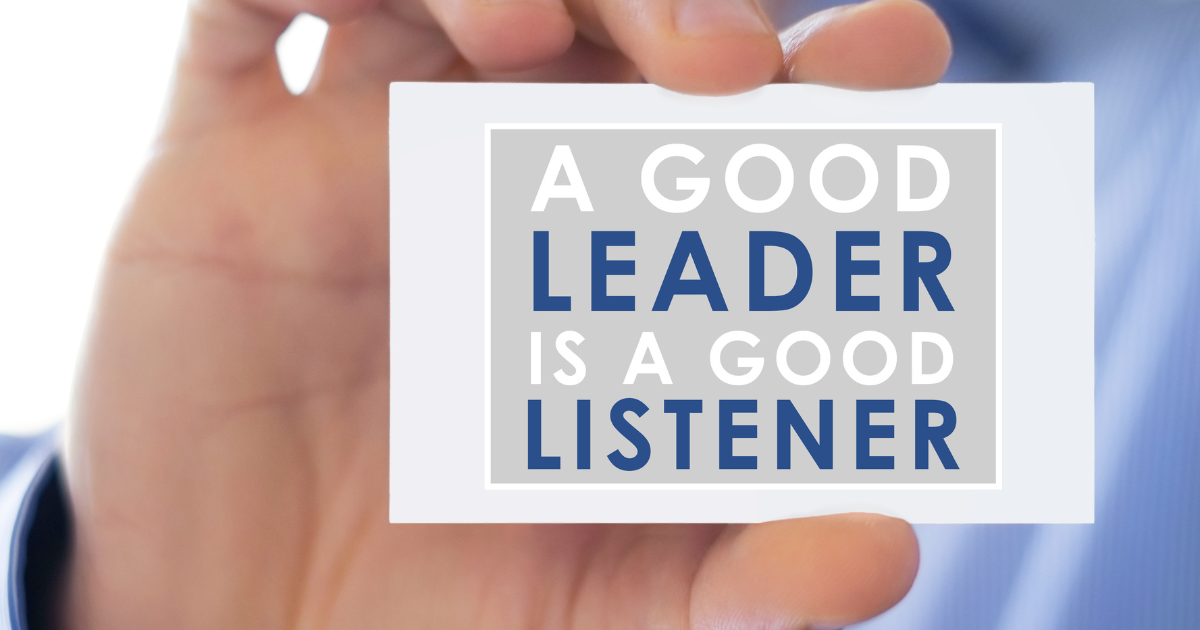Are you tired of feeling like your ideas fall on deaf ears? Do you struggle to convince others to see things from your perspective? It’s time to master the art of persuasion and take your communication skills to the next level.
Persuasion is a powerful tool that can help you achieve your goals, whether it’s persuading a potential client to sign a contract or convincing your boss to implement a new idea. But persuasion is more than just convincing someone to do what you want. It’s about building relationships, understanding people’s needs, and finding common ground.
By mastering the art of persuasion, you can become a more effective communicator and achieve greater success in all aspects of your life.
Key Takeaways
- Understanding the psychology behind persuasion is crucial for mastering the art of persuasion, with reciprocity, commitment and consistency, social proof, liking, authority, and scarcity being key points to focus on.
- Effective communication involves understanding your audience, identifying their needs and interests, building rapport, and using emotional appeal, evidence, logic, and persuasive techniques such as storytelling, rhetorical questions, repetition, tripling, and connotations.
- Leadership involves connecting with team members on a personal level, leading by example, using persuasive leadership styles, and implementing effective communication strategies to build trust and foster a positive work environment.
- Marketing involves using emotional marketing, influencer marketing, content marketing, emotional advertising, and social media strategy to build brand awareness, establish the brand as an authority in the industry, and create a sense of trust and loyalty with the audience.
Understanding Persuasion
You’re about to dive into the fascinating world of persuasion, where your communication skills can make all the difference.
Defining Persuasion
Understanding what persuasion means is crucial in mastering communication skills. Persuasion involves convincing someone else to take a certain action or adopt a particular point of view. Whether you’re trying to influence your boss to give you a raise or convince your friends to try a new restaurant, persuasion is an essential tool for success.
Persuasion tactics, persuasive language, persuasive writing, persuasive speaking, and persuasive advertising are all part of the art of persuasion. By mastering the art of persuasion, you can become a more effective communicator, build stronger relationships, and achieve your goals more easily.
The Psychology Behind Persuasion
Do you want to become a master of persuasion? It all comes down to understanding the psychology behind it.
Reciprocity
By giving something of value to someone else, you can trigger a feeling of indebtedness and encourage them to reciprocate your kind gesture. This is the essence of reciprocity, a powerful social exchange that benefits both parties involved.
Whether it’s a small gift or a big favor, the act of giving creates a sense of obligation that can lead to a return favor or a gratitude expression. The key to mastering the art of persuasion through reciprocity is to give without expecting anything in return.
Commitment and Consistency
You can increase your influence by staying true to your commitments and consistently following through with your actions, which builds trust and reliability in your relationships.
- Consistency bias is the tendency for people to seek consistency in their beliefs and behaviors, so when you demonstrate consistency, people are more likely to trust and follow you.
- The Foot in the door technique also leverages this bias by starting with small commitments and gradually increasing the request, leading to bigger commitments.
- Cognitive dissonance occurs when our beliefs and actions are not aligned, causing discomfort and a desire for consistency.
Social Proof
Witnessing others’ actions can greatly influence our own behavior, as we are susceptible to social proof and tend to follow the actions of those around us. Building credibility through testimonials and social validation is crucial in persuading others to take action.
Online reviews and case studies serve as powerful tools to showcase the success and satisfaction of previous customers, thereby increasing the likelihood of new customers taking the desired action. When we see that others have had positive experiences, we feel more confident in making the same decision.
Liking
When you genuinely like someone, you’re more likely to be influenced by their ideas and opinions. This makes likability a powerful tool in persuading others.
Building relationships and establishing a personal connection are key components to earning the trust and respect of others. Finding common interests and shared experiences helps to create a bond that can increase social influence and emotional appeal.
When people feel a connection with you, they’re more likely to listen to what you have to say and be open to your ideas. So, focus on building genuine relationships with others, and let your likability and authenticity shine through in your interactions.
You’ll be amazed at how much more persuasive you can be when people genuinely like and trust you.
Authority
Feeling intimidated by someone in a position of authority can be overwhelming, but it’s important to remember that they’re just people too.
Sources of authority can come in various forms, such as job titles, education, or experience. However, establishing credibility doesn’t necessarily mean having a high position; it’s about demonstrating expertise in a particular field.
You can also gain authority by using persuasive language and confidently presenting yourself. Understanding power dynamics is key to effectively communicating with authority figures.
It’s important to approach them with respect but also to maintain your own sense of confidence. Remember, an expert opinion carries weight, but it’s ultimately up to you to determine what you believe is true.
Keep in mind that while authority figures may have power, they’re not infallible. By respectfully challenging their ideas and presenting your own well-researched opinions, you can gain their respect and establish yourself as a credible source of information.
Scarcity
You may be familiar with the concept of scarcity, where the limited availability of a resource can increase its perceived value and drive demand. This is the power of scarcity and can be a valuable tool in mastering your communication skills.
By creating urgency and a fear of missing out, you can increase the desirability of your product or service. Limited-time offers, and exclusivity can also be used to your advantage, making customers feel like they’re getting something special that others can’t.
The key is to use scarcity in an authentic and honest way without resorting to manipulative tactics.
Elements of Persuasive Communication
By mastering these elements, you can become a powerful communicator who can influence and inspire others to take action. So, let’s dive into each of these elements and learn how to use them to your advantage.
Clarity of Message
Achieving clarity in your message is essential to persuade and communicate your ideas to others effectively. To ensure effective messaging, it’s important to focus on clear communication and eliminating confusion.
Simplifying language and articulating ideas concisely and understandably can help you achieve this. When communicating with others, it’s important to remember that they have a subconscious desire for understanding.
So, take the time to craft your message to speak to their needs and desires. Remember, the art of persuasion isn’t just about being convincing but also about being clear and engaging.
Understanding Your Audience
To truly master the art of communication, you must first understand your audience.
Identifying Audience Needs and Interests
When addressing your audience, it’s essential to consider what they need and what they’re interested in. This will help you tailor your message to speak directly to their concerns and capture their attention.
You can conduct an audience analysis, market research, and even create personas to understand better who you’re speaking to. User testing and understanding consumer behavior can also help you identify your audience’s pain points and motivations.
Building Rapport
Establishing a connection with your audience is like building a bridge – it requires a solid foundation and intentional effort.
Building trust is crucial, but it’s not just about what you say – it’s also about how you say it. Active listening is key to finding common ground with your audience and establishing a connection that goes beyond words.
It’s important to pay attention to nonverbal cues, such as body language and tone of voice, in order to connect with your audience truly.
Remember, people want to feel understood and valued, and building rapport is the first step in achieving that.
Emotional Appeal
You can use emotional appeal to effectively persuade your audience by tapping into their feelings and values. Connecting emotionally with your audience is key to building rapport authentically and creating empathy-driven communication.
Effective storytelling that speaks to the core values of your audience can evoke powerful emotions that lead to action. When you tap into the emotions of your audience, you make your message more relatable, memorable, and impactful.
By understanding the emotional needs of your audience, you can craft a persuasive argument that resonates with them on a deeper level. Remember, emotions drive behavior, so using emotional appeal in your communication can be a powerful tool to achieve your goals.
Use of Evidence and Logic
Now that you’ve learned how to appeal to people’s emotions, it’s time to up your game in the art of persuasion.
One surefire way to convince others is by presenting evidence-based arguments and using logical reasoning. Persuasive research and empirical evidence can help bolster your claims, making your argument more compelling and rational.
By utilizing these tools, you can appeal to the logical side of your audience’s brain and increase the likelihood that they will be persuaded by your ideas.
Persuasive Techniques
These techniques are powerful tools that can help you connect with your audience, evoke emotions, and ultimately persuade them to take action.
Storytelling and Anecdotes
Imagine captivating your audience with a personal story or an amusing anecdote to convey a message effectively. The power of storytelling lies in the ability to create a relatable anecdote that connects with the audience on an emotional level.
By sharing personal experiences, you can convey values that resonate with your listeners and create a deeper understanding of your message. A well-told story has the potential to evoke a range of emotions, from laughter to tears, and can leave a lasting impact on your audience.
Rhetorical Questions
Using rhetorical questions can add a dynamic element to your speech, engaging your audience and prompting them to think more deeply about your message. Effective usage of rhetorical devices, such as engaging techniques and persuasive questions, can strategically impact the success of your communication.
Asking thought-provoking questions can challenge your audience’s assumptions and beliefs, leading them to consider your message in a new light.
Repetition for Emphasis
You can enhance the impact of your message by using repetition techniques for emphasis. This not only elevates the sophistication of your speech but it also captivates your audience with your persuasive abilities. By repeating key phrases, you reinforce your message and increase memory retention for your listeners.
This effective communication strategy can be used in persuasive speeches, presentations, and even everyday conversations.
Tripling
This technique involves presenting three points or reasons to support your argument, which can have a strong psychological impact on your audience.
However, it’s important to consider ethical considerations and cultural differences when using this technique. Ensure your points are valid and relevant, and avoid manipulating or deceiving your audience.
Real-life examples of tripling can be found in political speeches, advertising, and even personal conversations.
Using Positive and Negative Connotations
Exploiting the emotional connotations of words can be a powerful tool for captivating and swaying your audience. When choosing your words, consider their positive and negative connotations.
Positive connotations can create a sense of optimism and hope, while negative connotations can elicit fear or sadness. By carefully selecting your words, you can create an emotional impact that resonates with your audience.
Persuasive language can be used to inspire action and change, but it’s important to remember that the power of your words lies not only in what you say but how you say it. So choose your words wisely and use them to your advantage.
Improving Your Persuasion Skills
To become a master of persuasion, you need to focus on improving your communication skills.
Active Listening
You’ll become a more effective communicator by honing your active listening skills, allowing you to understand and connect with others truly.
Active listening techniques involve paying attention to both verbal and nonverbal cues, such as body language, tone of voice, and facial expressions.
It’s also important to ask effective questions encouraging the speaker to share more information and clarify their thoughts.
Note: Distractions can hinder active listening, so it’s crucial to eliminate them and give your full attention to the conversation.
Empathy and Understanding
An empathetic approach means putting yourself in someone else’s shoes, understanding their perspectives, and building relationships based on emotional intelligence. This approach is crucial to becoming a persuasive communicator because it allows you to connect with others on a deeper level and truly understand their needs and desires.
Here are four tips to help you develop your empathetic approach and become a master of persuasion:
- Practice active listening.
- Use your emotional intelligence to identify and understand others’ emotions and perspectives.
- Seek to build relationships based on trust and mutual understanding.
- Be open-minded and willing to see things from different perspectives.
Building Credibility
You want to persuade others to your point of view, and one of the most important ways to do that is by building credibility.
Consistency
Consistency is key to building trust and credibility in your communication with others. It’s not just about being consistent in your behavior, although that’s important.
- Cognitive consistency, or the idea that people want to maintain consistent beliefs and attitudes, also plays a role.
- Consistency in branding and messaging also helps to establish a strong, recognizable identity.
- Consistency in customer experience – people want to know what they can expect from you, and delivering that consistently will build loyalty and trust.
So, whether you’re communicating with clients, colleagues, or friends, remember that consistency is key. It’s not always easy, but it’s worth it in the end.
Expertise
Having expertise in your field is crucial for building credibility and gaining the trust of your audience. It takes time and effort to master your expertise, but developing these skills is essential for effective communication and persuasion.
Gaining knowledge and acquiring proficiency in your area of expertise allows you to communicate your ideas and opinions to others confidently.
Improving your ability to articulate complex concepts simply is a valuable skill that can help you connect with your audience and make a lasting impact.
Trustworthiness
Now that you’ve established your expertise, you must also work on building trust with your audience. This means that you need to be seen as a trustworthy and reliable source of information.
Building trust doesn’t happen overnight, but it’s worth the effort. Here are three ways to do it:
- Pay attention to your nonverbal cues.
- Be honest and transparent.
- Be consistent and reliable.
Verbal and Non-Verbal Communication
You might not realize it, but your body language, tone, and pitch play a huge role in how others perceive you.
Body Language
Utilizing proper body language is essential in mastering effective communication skills. Nonverbal cues, such as facial expressions, posture, gestures, and eye contact, can speak volumes without saying a word.
Here are three things to keep in mind:
- Maintain eye contact to show that you’re engaged and interested in the conversation.
- Keep your posture upright and open to exude confidence and approachability.
- Use appropriate gestures to emphasize your points and convey enthusiasm.
Remember, your body language can either enhance or detract from your message, so make sure it’s working in your favor.
Tone and Pitch
Proper tone and pitch are crucial in conveying the intended message and avoiding misunderstandings. Your tone of voice is a powerful tool that can influence the mood of your listener.
Pitch variation is also key to keeping your audience engaged and interested. Nonverbal cues like facial expressions and body language can also convey your tone and mood.
Persuasion in Different Contexts
You’re about to dive into persuasion in different contexts, where you’ll learn how to communicate effectively with various people in different situations.
Get ready to enhance your persuasion skills and succeed in any context!
1. Persuasion in Sales
- When selling, it’s important to understand the needs and wants of your potential customers.
- Building relationships with them is crucial, as it helps establish trust and credibility.
- Creating a sense of urgency can also be effective in persuading them to act quickly. However, objections are bound to arise, so it’s important to handle them with finesse and address any concerns they may have.
- Closing deals is an art in itself and requires a certain level of finesse and skill. But it doesn’t end there – effective follow-up is key to maintaining a strong relationship with your customers and ensuring repeat business.
Note that it’s not just about making a sale – it’s about creating a positive and memorable experience for your customers.
2. Persuasion in Leadership
As a leader, it’s essential to connect with your team on a personal level to inspire and motivate them toward a common goal.
Leading by example is one of the most effective ways to do this, as it shows your team that you’re willing to do the work alongside them.
Additionally, implementing persuasive leadership styles can help you communicate your vision in a way that inspires followers and motivates teams.
Effective communication strategies, such as active listening, open dialogue, and clear expectations, are also crucial in building trust and fostering a positive work environment.
As a leader, your actions and words have a significant impact on those around you, so always strive to lead with empathy, authenticity, and a clear vision for success.
3. Persuasion in Negotiation
Compromise and Collaboration
If you want to collaborate effectively and reach a compromise, you should be willing to listen and understand the perspectives of others. Collaborative problem-solving is not just about finding solutions that work for you but for everyone involved.
Compromising for solutions takes teamwork strategies and effective negotiation. But most importantly, it takes conflict resolution skills.
It can be easy to get stuck in your own perspective and become defensive when faced with opposing views. However, listening and understanding where others are coming from can lead to a more productive and harmonious outcome.
Understanding and Leveraging Power Dynamics
Understanding and leveraging power dynamics requires a willingness to acknowledge and navigate the complex relationships between individuals and groups.
It involves not only recognizing the hierarchies and structures that exist within an organization but also understanding how to leverage your own authority and navigate resistance from others effectively.
Managing conflicts and building alliances are also key components of mastering power dynamics. It’s about recognizing that power is not just about position or title but also about influence and relationships.
4. Persuasion in Marketing
Emotional Marketing
By implementing emotional marketing strategies, you can effectively connect with your audience on a deeper level and compel them to take action.
Emotional advertising taps into consumer psychology by using brand storytelling and psychological triggers to create an emotional connection with your target audience.
When you evoke strong emotions in your audience through your marketing message, you create a sense of trust and loyalty that can be hard to break.
Influencer Marketing
Now that you’ve learned about emotional marketing and how it can be used to appeal to your audience’s emotions and desires, it’s time to take your communication skills to the next level with influencer marketing.
Influencer marketing is all about creating collaborative campaigns and building influencer partnerships that can help you reach a wider audience through authentic content creation.
However, finding a balance between authenticity and promotion is important, as audiences can easily detect when content is forced or inauthentic.
To measure the success of your partnerships, it’s crucial to track your return on investment (ROI) and consider working with micro-influencers who have smaller but highly engaged follower bases.
Content Marketing
Get ready to take your content to the next level with content marketing – it’s all about creating valuable and relevant content for your audience to attract and retain them.
Content creation is a crucial aspect of any marketing strategy, and content marketing takes it to the next level by focusing on creating content that provides value to your audience. By engaging your audience through your content, you can build a stronger relationship with them and increase brand awareness.
To make the most of content marketing, it’s important to have a social media strategy in place to reach your target audience effectively. Additionally, optimizing your content for search engines can help improve your visibility and reach even more people.
With content marketing, the key is to focus on providing value to your audience and building a strong connection with them.












